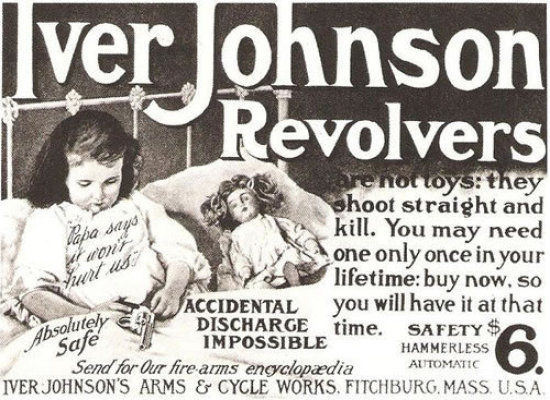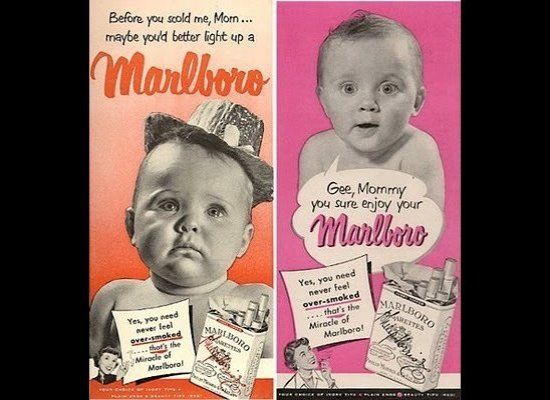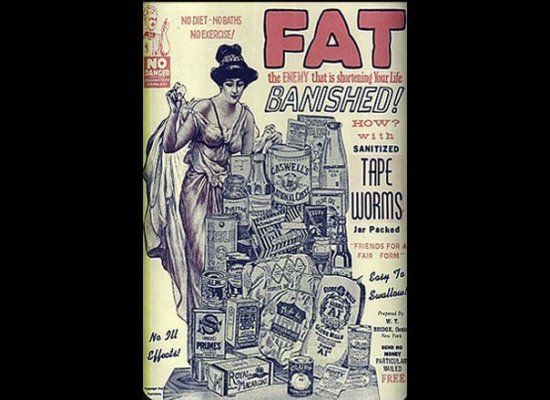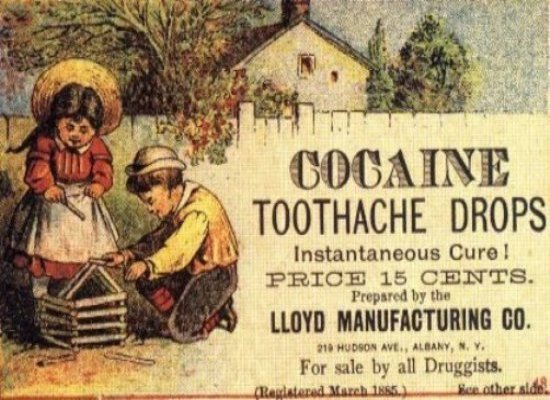Biker, Happy Joan of Arc Day!
- Thread starter Goatboy
- Start date
-
Come along to the amazing Summer Moot (21st July - 2nd August), a festival of bushcrafting and camping in a beautiful woodland PLEASE CLICK HERE for more information.
You are using an out of date browser. It may not display this or other websites correctly.
You should upgrade or use an alternative browser.
You should upgrade or use an alternative browser.
Biker, Happy Glorious Twelfth, Sad Quagga & Schrödinger Day.

The Glorious Twelfth is usually used to refer to 12 August, the start of the shooting season for Red Grouse (Lagopus lagopus scotica) and to a lesser extent the Ptarmigan (Lagopus muta) in Britain. This is one of the busiest days in the shooting season, with large amounts of game being shot. The date itself is traditional, the current legislation enshrining it is the Game Act 1831 (and in Northern Ireland, the Wildlife (Northern Ireland) Order 1985). Not all game (as defined by the Game Act 1831) have the same start to their open seasons - most begin on 1 September, with 1 October for Woodcock and Pheasant.
Since British law says that the start of the season cannot fall on a Sunday, it is sometimes postponed to 13 August, as in 2001 and 2007.Because grouse are not and never have been reared to any extent for shooting, their numbers fluctuate naturally from year to year. In recent years, the Glorious Twelfth has also been hit by hunt saboteurs, the 2001 foot and mouth crisis (which further postponed the date in affected areas) and the effect of sheep tick, heather beetle, the gut parasite Trichostrongylus tenuis and severe flooding and bad weather. In some seasons where certain moors are hit by low numbers of grouse, shooting may not occur at all or be over by September.

On this day in 1883 - The last quagga dies at the Artis Magistra zoo in Amsterdam.
The quagga (Equus quagga quagga) is an extinct subspecies of the plains zebra that lived in South Africa. It was long thought to be a distinct species, but recent genetic studies have shown it to be the southernmost subspecies of the plains zebra. It is considered particularly close to Burchell's zebra. Its name is derived from the plains zebra's call, which sounds like "kwa-ha-ha".
The quagga is believed to have been around 257 cm (8.43 ft) long and 125–135 cm (4.10–4.43 ft) tall at the shoulder. It was distinguished from other zebras by its limited pattern of primarily brown and white stripes, mainly on the front part of the body. The rear was brown and without stripes, and therefore more horse-like. The distribution of stripes varied considerably between individuals. Little is known about its behaviour but it may have gathered into herds of 30–50 individuals. Quaggas were said to be wild and lively, yet were also considered more docile than Burchell's zebra. They were once found in great numbers in the Karoo of the former Cape Province and the southern part of the former Orange Free State in South Africa.
Since Dutch settlement of South Africa began, the quagga was heavily hunted, and it competed with domesticated animals for forage. While some individuals were taken to zoos in Europe, breeding programs were not successful. The last wild population lived in the Orange Free State, and the quagga was extinct in the wild by 1878. The last captive specimen died in Amsterdam on 12 August 1883. Only one quagga was ever photographed alive and only 23 skins are preserved today. In 1984, the quagga was the first extinct animal to have its DNA analysed, and the Quagga Project has tried to recreate it by selectively breeding plains zebras to resemble it.

Today in 1887 - Erwin Schrodinger, Vienna Austria, physicist, Nobel Prize Laureate & cat botherer was born. (d. 1961 - unlike the cat which is in a twin state.)
Most famous for his cat theorem, Schrödinger's cat is a thought experiment, sometimes described as a paradox, devised by Austrian physicist Erwin Schrödinger in 1935. It illustrates what he saw as the problem of the Copenhagen interpretation of quantum mechanics applied to everyday objects, resulting in a contradiction with common sense. The scenario presents a cat that may be both alive and dead, depending on an earlier random event. Although the original "experiment" was imaginary, similar principles have been researched and used in practical applications. The thought experiment is also often featured in theoretical discussions of the interpretations of quantum mechanics. In the course of developing this experiment, Schrödinger coined the term Verschränkung (entanglement).
http://en.wikipedia.org/wiki/File:Schrodingers_cat.svg
http://en.wikipedia.org/wiki/File:Schrodingers_cat.svg
Schrödinger's cat: a cat, a flask of poison, and a radioactive source are placed in a sealed box. If an internal monitor detects radioactivity (i.e. a single atom decaying), the flask is shattered, releasing the poison that kills the cat. The Copenhagen interpretation of quantum mechanics implies that after a while, the cat is simultaneously alive and dead. Yet, when one looks in the box, one sees the cat either alive or dead, not both alive and dead. This poses the question of when exactly quantum superposition ends and reality collapses into one possibility or the other.
Famous Deaths
1964- Ian L Fleming, British journalist/writer (James Bond), dies at 56
1982 - Henry Fonda, actor (On Golden Pond), dies of heart disease at 77
1982 - Joe Tex, rocker, dies at 49
2009 - Les Paul (Lester William Polsfuss) American musician and inventor aged 94
[video=youtube;HH8vjxFIUC4]http://www.youtube.com/watch?v=HH8vjxFIUC4[/video]

The Glorious Twelfth is usually used to refer to 12 August, the start of the shooting season for Red Grouse (Lagopus lagopus scotica) and to a lesser extent the Ptarmigan (Lagopus muta) in Britain. This is one of the busiest days in the shooting season, with large amounts of game being shot. The date itself is traditional, the current legislation enshrining it is the Game Act 1831 (and in Northern Ireland, the Wildlife (Northern Ireland) Order 1985). Not all game (as defined by the Game Act 1831) have the same start to their open seasons - most begin on 1 September, with 1 October for Woodcock and Pheasant.
Since British law says that the start of the season cannot fall on a Sunday, it is sometimes postponed to 13 August, as in 2001 and 2007.Because grouse are not and never have been reared to any extent for shooting, their numbers fluctuate naturally from year to year. In recent years, the Glorious Twelfth has also been hit by hunt saboteurs, the 2001 foot and mouth crisis (which further postponed the date in affected areas) and the effect of sheep tick, heather beetle, the gut parasite Trichostrongylus tenuis and severe flooding and bad weather. In some seasons where certain moors are hit by low numbers of grouse, shooting may not occur at all or be over by September.

On this day in 1883 - The last quagga dies at the Artis Magistra zoo in Amsterdam.
The quagga (Equus quagga quagga) is an extinct subspecies of the plains zebra that lived in South Africa. It was long thought to be a distinct species, but recent genetic studies have shown it to be the southernmost subspecies of the plains zebra. It is considered particularly close to Burchell's zebra. Its name is derived from the plains zebra's call, which sounds like "kwa-ha-ha".
The quagga is believed to have been around 257 cm (8.43 ft) long and 125–135 cm (4.10–4.43 ft) tall at the shoulder. It was distinguished from other zebras by its limited pattern of primarily brown and white stripes, mainly on the front part of the body. The rear was brown and without stripes, and therefore more horse-like. The distribution of stripes varied considerably between individuals. Little is known about its behaviour but it may have gathered into herds of 30–50 individuals. Quaggas were said to be wild and lively, yet were also considered more docile than Burchell's zebra. They were once found in great numbers in the Karoo of the former Cape Province and the southern part of the former Orange Free State in South Africa.
Since Dutch settlement of South Africa began, the quagga was heavily hunted, and it competed with domesticated animals for forage. While some individuals were taken to zoos in Europe, breeding programs were not successful. The last wild population lived in the Orange Free State, and the quagga was extinct in the wild by 1878. The last captive specimen died in Amsterdam on 12 August 1883. Only one quagga was ever photographed alive and only 23 skins are preserved today. In 1984, the quagga was the first extinct animal to have its DNA analysed, and the Quagga Project has tried to recreate it by selectively breeding plains zebras to resemble it.

Today in 1887 - Erwin Schrodinger, Vienna Austria, physicist, Nobel Prize Laureate & cat botherer was born. (d. 1961 - unlike the cat which is in a twin state.)
Most famous for his cat theorem, Schrödinger's cat is a thought experiment, sometimes described as a paradox, devised by Austrian physicist Erwin Schrödinger in 1935. It illustrates what he saw as the problem of the Copenhagen interpretation of quantum mechanics applied to everyday objects, resulting in a contradiction with common sense. The scenario presents a cat that may be both alive and dead, depending on an earlier random event. Although the original "experiment" was imaginary, similar principles have been researched and used in practical applications. The thought experiment is also often featured in theoretical discussions of the interpretations of quantum mechanics. In the course of developing this experiment, Schrödinger coined the term Verschränkung (entanglement).
http://en.wikipedia.org/wiki/File:Schrodingers_cat.svg

http://en.wikipedia.org/wiki/File:Schrodingers_cat.svg
Schrödinger's cat: a cat, a flask of poison, and a radioactive source are placed in a sealed box. If an internal monitor detects radioactivity (i.e. a single atom decaying), the flask is shattered, releasing the poison that kills the cat. The Copenhagen interpretation of quantum mechanics implies that after a while, the cat is simultaneously alive and dead. Yet, when one looks in the box, one sees the cat either alive or dead, not both alive and dead. This poses the question of when exactly quantum superposition ends and reality collapses into one possibility or the other.
Famous Deaths
1964- Ian L Fleming, British journalist/writer (James Bond), dies at 56
1982 - Henry Fonda, actor (On Golden Pond), dies of heart disease at 77
1982 - Joe Tex, rocker, dies at 49
2009 - Les Paul (Lester William Polsfuss) American musician and inventor aged 94
[video=youtube;HH8vjxFIUC4]http://www.youtube.com/watch?v=HH8vjxFIUC4[/video]
Last edited:
The first of NASA's three High Energy Astronomy Observatories, HEAO 1, launched August 12, 1977 aboard an Atlas rocket with a Centaur upper stage, operated until 9 January 1979. During that time, it scanned the X-ray sky almost three times over 0.2 keV - 10 MeV, provided nearly constant monitoring of X-ray sources near the ecliptic poles, as well as more detailed studies of a number of objects through pointed observations.1978: International Sun-Earth Explorer 3 - USA Interplanetary Monitor launched. The Internation Sun-Earth Explorer was renamed to International Cometary Explorer (ICE). On September 11, 1985 it passed through the plasma tail of comet Giacobini-Zinner.

[h=2]A1: Large-Area Sky Survey instrument[/h] The A1, or Large-Area Sky Survey (LASS) instrument, covered the 0.2525 keV energy range, using seven large proportional counters.[SUP][1][/SUP] It was designed, operated, and managed at the Naval Research Laboratory (NRL) under the direction of Principal Investigator Dr. Herbert D. Friedman, and the prime contractor was TRW. The HEAO A-1 X-Ray Source Catalog included 842 discrete X-ray sources.[SUP][2][/SUP]
[h=2]A2: Cosmic X-ray Experiment[/h] The A2, or Cosmic X-ray Experiment (CXE), from the Goddard Space Flight Center, covered the 2-60 keV energy range with high spatial and spectral resolution. The Principal Investigators were Dr. Elihu A. Boldt and Dr. Gordon P. Garmire.[SUP][3][/SUP]
[h=2]A3: Modulation Collimator instrument[/h] Main article: Modulation collimator
The A3, or Modulation Collimator (MC) instrument, provided high-precision positions of X-ray sources, accurate enough to permit follow-up observations to identify optical and radio counterparts. It was provided by the Center for Astrophysics (Smithsonian Astrophysical Observatory and the Harvard College Observatory, SAO/HCO).[SUP][4][/SUP] Principal Investigators were Dr. Daniel A. Schwartz of SAO and Dr. Hale V. Bradt of MIT.
[h=2]A4: Hard X-Ray / Low-Energy Gamma-ray experiment[/h] The A4, or Hard X-ray / Low Energy Gamma-ray Experiment, used sodium iodide (NaI) scintillation counters to cover the energy range from about 20 keV to 10 MeV.[SUP][5][/SUP] It consisted of seven clustered modules, of three distinct designs, in a roughly hexagonal array.[SUP][6][/SUP] Each detector was actively shielded by surrounding CsI scintillators, in active-anti-coincidence, so that an extraneous particle or gamma-ray event from the side or rear would be vetoed electronically, and rejected. (It was discovered in early balloon flight by experimenters in the 1960s that passive collimators or shields, made of materials such as lead, actually increase the undesired background rate, due to the intense showers of secondary particles and photons produced by the extremely high energy (GeV) particles characteristic of the space radiation environment.) A plastic anti-coincidence scintillation shield, essentially transparent to gamma-ray photons, protected the detectors from high-energy charged particles entering from the front.
For all seven modules, the unwanted background effects of particles or photons entering from the rear was suppressed by a "phoswich" design, in which the active NaI detecting element was optically coupled to a layer of CsI on its rear surface, which was in turn optically coupled to a single photomultiplier tube for each of the seven units. Because the NaI has a much faster response time (~0.25 μs) than the CsI (~1 μs), electronic pulse shape discriminators could distinguish good events in the NaI from mixed events accompanied by a simultaneous interaction in the CsI.
The largest, or High Energy Detector (HED), occupied the central position and covered the upper range from ~120 keV to 10 MeV, with a field-of-view (FOV) collimated to 37° FWHM. Its NaI detector was 5 inches (13 cm) in diameter by 3 inches (7.6 cm) thick. The extreme penetrating power of photons in this energy range made it necessary to operate the HED in electronic anti-coincidence with the surrounding CsI and also the six other detectors of the hexagon.
Two Low Energy Detectors (LEDs) were located in positions 180° apart on opposite side of the hexagon. They had thin ~3 mm thick NaI detectors, also 5 inches (13 cm) in diameter, covering the energy range from ~10200 keV. Their FOV was defined to fan-shaped beams of 1.7° x 20° FWHM by passive, parallel slat-plate collimators. The slats of the two LEDs were inclined to ±30° to the nominal HEAO scanning direction, crossing each other at 60°. Thus, working together, they covered a wide field of view, but could localize celestial sources with a precision determined by their 1.7° narrow fields.
The four Medium Energy Detectors (MEDs), with a nominal energy range of 80 keV 3 MeV, had 3 inches (7.6 cm) dia by 1 inch (2.5 cm) thick NaI detector crystals, and occupied the four remaining positions in the hexagon of modules. They had circular FOVs with a 17° FWHM.
The primary data from A4 consisted of "event-by-event" telemetry, listing each good (i.e., un-vetoed) event in the NaI detectors. The experiment had the flexibility to tag each event with its pulse height (proportional to its energy), and a one or two byte time tag, allowing precision timing of objects such as gamma-ray bursts and pulsars.
Results of the experiment included a catalog of the positions and intensities of hard X-ray (10200 keV) sources,[SUP][7][/SUP] a strong observational basis for extremely strong magnetic fields (of order 10[SUP]13[/SUP] G) on the rotating neutron stars associated with Her X-1[SUP][8][/SUP][SUP][9][/SUP] and 4U 0115+634, a definitive diffuse component spectrum between 13 and 200 keV, discovery of the power-law shape of the Cygnus X-1 power density spectrum, and discovery of slow intensity cycles in the X-Ray sources SMC X-1 and LMC X-4, resulting in approximately 15 Ph.D theses and ~100 scientific publications.
The A4 instrument was provided and managed by the University of California at San Diego, under the direction of Prof. Laurence E. Peterson, in collaboration with the X-ray group at MIT, where the initial A4 data reduction was performed under the direction of Prof. Walter H. G. Lewin.
Space shuttle Enterprise makes 1st atmospheric flight
[FONT=arial,helvetica]Enterprise was the first Space Shuttle built for NASA. Although officially classified as an Orbiter and given the designation OV-101 for Orbiter Vehicle 101, Enterprise was not actually capable of traveling in space. Enterprise had no rocket engines or thermal protection tiles and was equipped with a pitot tube on the nose that limited it to low speed atmospheric flights only. Enterprise was instead a prototype used to test the Orbiter's flight characteristics during landing. It performed a similar function as Russia's Analog Buran did in collecting information on how well the vehicle performed during approach and landing.
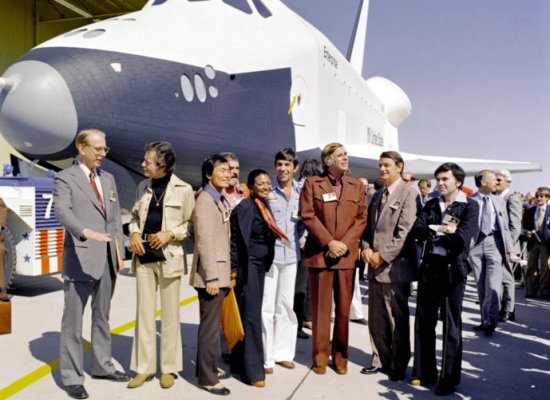
Roll-out ceremony for Enterprise attended by the cast of Star Trek The Space Shuttle program was first approved in 1972 and construction of OV-101 began at Rockwell International in Palmdale, California, in 1974. Enterprise was completed and rolled out of the assembly plant in 1976. The vehicle was originally supposed to be called Constitution in celebration of America's bicentennial, but a write-in campaign by fans of the television show Star Trek encouraged NASA to name OV-101 as Enterprise instead.
Enterprise was used for several ground vibration tests before being moved 36 miles (56 km) over land to NASA's Dryden Flight Research Center located at Edwards Air Force Base north of Palmdale. From February through October of 1977, Enterprise conducted a series of taxi and flight tests to demonstrate that the Orbiter design could operate from a conventional runway. Known as the Approach and Landing Test, or ALT, the program began with a series of three taxi tests while Enterprise was attached to the modified Boeing 747 Shuttle Carrier Aircraft (SCA). The taxi tests measured structural loads and responses to determine how well the mated vehicles could be handled and controlled on the ground up to speeds of 157 mph (253 km/h). The SCA's braking and steering systems were also tested.
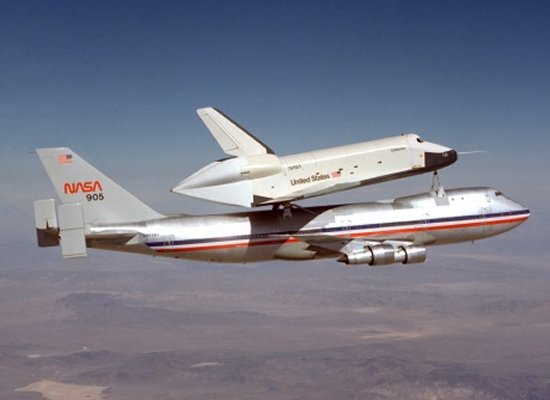
Enterprise mated to the 747 Shuttle Carrier Aircraft during a captive flight Enterprise became airborne for the first time on 18 February 1977 as the second stage of testing began. These five flights were called captive-inert and had Enterprise remain mated to the SCA with no crew aboard. A tailcone was placed on the back of Enterprise to reduce turbulence on the tail control surfaces of the 747 while the two planes were attached. These flights reached altitudes up to 30,000 ft (9,145 m) and a maximum speed of 474 mph (763 km/h). The longest captive flight lasted over three hours, and this phase of testing allowed NASA to determine the structural integrity and handling qualities of the mated vehicles in flight.
Next came a series of three additional captive flights with two crewmen aboard Enterprise while it remained attached to the SCA. These flights allowed the crew to operate the systems and flight controls aboard Enterprise while it was in the air and verify that the vehicle functioned properly. This phase also included flutter tests of the mated craft at low and high speed, a separation trajectory test, and a practice for the first free flight.
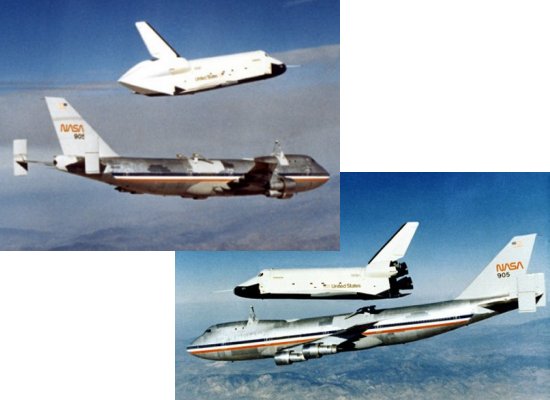
Enterprise separating from the SCA during free flights At last on 12 August 1977, Enterprise was released from the SCA for the first time to fly and make a gliding landing on its own under astronaut control. A total of five free flights were conducted, the last two without the tailcone attached. Mockups of the three space shuttle main engines and two orbital maneuvering system engines were exposed for these two flights to simulate the Orbiter's aerodynamic configuration during a return from space. The longest free flight lasted nearly 5½ minutes after Enterprise was released from an altitude of 26,000 ft (7,925 m). The free flights were performed at minimum weight and various center of gravity locations as well as several release altitudes to test the Orbiter's flight characteristics under different conditions.
The first four gliding flights landed on the dry lakebed at Edwards AFB while the final test touched down on the main concrete runway to simulate a return from space. The free flights demonstrated the vehicle's approach and landing capabilities while under pilot control, an autoland approach mode, the airworthiness of the Orbiter design in subsonic flight, and the operation of several key systems in preparation for the first manned orbital flight. The final flight also revealed a problem in the control system that could allow Pilot-Induced Oscillation (PIO), a phenomenon where the pilot's control inputs result in the vehicle becoming unstable. Because this issue was identified so early, engineers were able to develop a correction for the control system years before the first orbital flight.
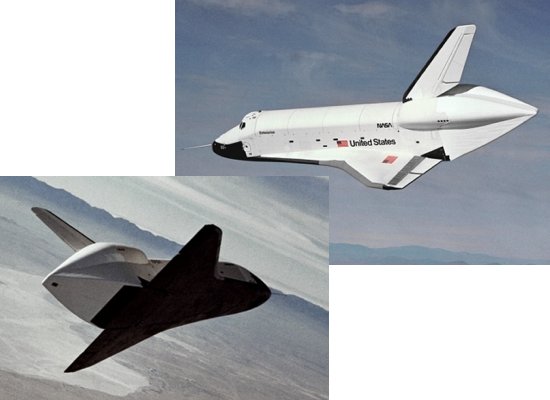
Views of Enterprise gliding to a landing at Edwards AFB Two different astronaut crews flew aboard Enterprise during the captive and free flights. Five of the eight missions were flown by Fred Haise (of Apollo 13 fame) and Gordon Fullerton while the remaining three included Joe Engle and Richard Truly. The same crew of four was aboard the 747 SCA during all 16 taxi and flight tests. This crew included pilots Fitzhugh Fulton and Thomas McMurtry as well as flight engineers Louis Guidry and Victor Horton.
Following its final free flight on 26 October 1977, Enterprise was transferred to several other NASA facilities for additional tests preparing the way for the first Space Shuttle launch. Modifications were first made to the SCA and Enterprise for a series of four ferry flights to various NASA facilities. OV-101 was then ferried to NASA Marshall Space Flight Center in Huntsville, Alabama, in 1978. At Marshall, Enterprise was mated to an External Tank (ET) and two Solid Rocket Boosters (SRBs) so the assembled stack could undergo vertical ground vibration tests. The tests measured structural dynamic response modes of the mated vehicle that were used to refine the design of connection interfaces. Enterprise was next ferried to NASA Kennedy Space Center where it was again mated to an ET and SRBs. The combined stack was transported on the mobile launcher platform to Launch Complex 39-A for fit checks and to practice launch and handling procedures. Finally, Enterprise was brought back to NASA Dryden in 1979 where the Orbiter was again moved over land to the Rockwell International factory. Here, several components were removed and refurbished for installation on the spaceworthy Orbiters under construction.
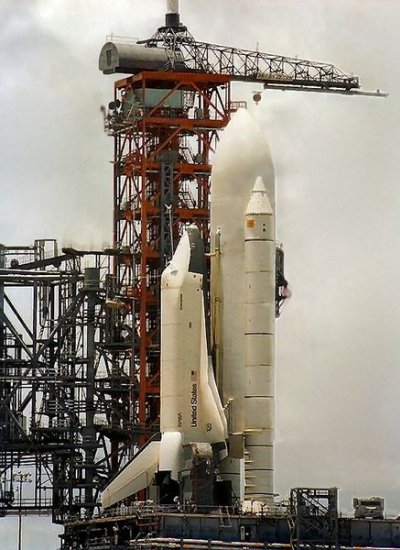
Enterprise as part of a complete Space Shuttle stack at Kennedy Space Center The first orbital mission of the Space Shuttle was launched in April 1981 when Columbia (OV-102) made the maiden journey into space. Originally, it was planned that Enterprise would be modified with the same systems as Columbia and converted into a spaceworthy Orbiter. Although Enterprise resembled the other Orbiters externally, it had not been built with working engines, orbital maneuvering thrusters, or thermal protecting tiles. These systems were to be refitted so that Enterprise would be the second Orbiter to be launched into space. However, the Orbiter design was revised as Columbia was being built to save weight. Many changes would have to be made to the wing and fuselage structure of Enterprise to make it compatible with the rest of the Shuttle fleet.
NASA decided this conversion was too expensive. A cheaper alternative was to modify another test vehicle called Static Test Article 099 (STA-099) into a spaceworthy orbiter. Once converted, STA-099 became OV-099 and was named Challenger. Thus, Challenger became NASA's second spaceworthy Orbiter and was joined by Discovery (OV-103) and Atlantis (OV-104) to create a fleet of four Shuttles. Enterprise, meanwhile, was essentially retired. The Orbiter was ferried around the world in 1983 to make appearances in France, Germany, Italy, the United Kingdom, and Canada. Enterprise was also transported by barge from Mobile, Alabama, to New Orleans, Louisiana, for the 1984 World's Fair. One of the vehicle's final official uses came in 1985 when Enterprise was ferried to Vandenburg Air Force Base in California. The US Air Force had originally planned to launch Space Shuttle flights from this west coast site to achieve polar orbits. Enterprise was attached to an ET and SRBs and rolled out to the SLC-6 launch pad for fit checks and other tests. Plans to launch the Shuttle from this site were later abandoned and no other Orbiter ever visited SLC-6.
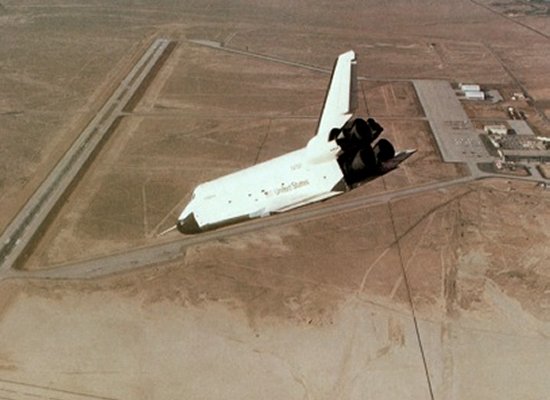
Enterprise during its first free flight without the tailcone Enterprise was officially retired on 18 November 1985 when the vehicle was ferried to Washington, DC, and donated to the Smithsonian Institution National Air & Space Museum. After the Challenger disaster in 1986, NASA again explored converting Enterprise into a spaceworthy replacement, but it was decided to instead build a new Orbiter from spare structural parts that had been purchased with Discovery and Atlantis. These components were used to construct OV-105 that was given the name Endeavour.
Enterprise remained in storage at the Smithsonian's Dulles Airport facility throughout the 1990s but parts of it were removed for use in the investigation that followed the loss of Columbia in 2003. Fiberglass panels along Enterprise's wing leading edge simulated the reinforced carbon-carbon (RCC) thermal protection panels of Columbia. Panels taken from Enterprise were used in a series of tests to evaluate the damage a foam insulation impact could do to the thermal protection system. These tests as well as tests on actual RCC panels removed from Discovery demonstrated that a foam impact could indeed create cracks or holes in the RCC panels, which was the most likely cause of the Columbia disaster.
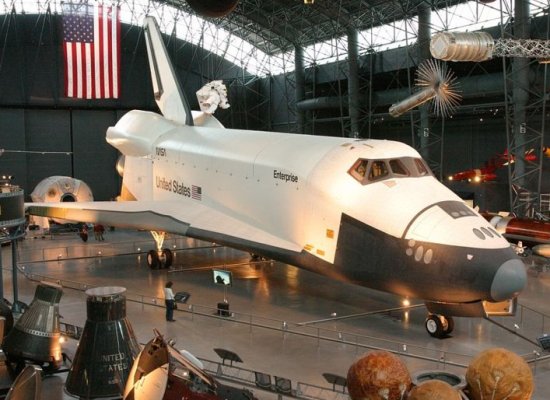
Enterprise displayed at the National Air & Space Museum Enterprise remains part of the Smithsonian collection today and is now the featured attraction of the space collection displayed at the National Air and Space Museum's Steven F. Udvar-Hazy Center near Dulles International Airport.
- answer by Molly Swanson, 7 January 2007
[/FONT]

[h=2]A1: Large-Area Sky Survey instrument[/h] The A1, or Large-Area Sky Survey (LASS) instrument, covered the 0.2525 keV energy range, using seven large proportional counters.[SUP][1][/SUP] It was designed, operated, and managed at the Naval Research Laboratory (NRL) under the direction of Principal Investigator Dr. Herbert D. Friedman, and the prime contractor was TRW. The HEAO A-1 X-Ray Source Catalog included 842 discrete X-ray sources.[SUP][2][/SUP]
[h=2]A2: Cosmic X-ray Experiment[/h] The A2, or Cosmic X-ray Experiment (CXE), from the Goddard Space Flight Center, covered the 2-60 keV energy range with high spatial and spectral resolution. The Principal Investigators were Dr. Elihu A. Boldt and Dr. Gordon P. Garmire.[SUP][3][/SUP]
[h=2]A3: Modulation Collimator instrument[/h] Main article: Modulation collimator
The A3, or Modulation Collimator (MC) instrument, provided high-precision positions of X-ray sources, accurate enough to permit follow-up observations to identify optical and radio counterparts. It was provided by the Center for Astrophysics (Smithsonian Astrophysical Observatory and the Harvard College Observatory, SAO/HCO).[SUP][4][/SUP] Principal Investigators were Dr. Daniel A. Schwartz of SAO and Dr. Hale V. Bradt of MIT.
[h=2]A4: Hard X-Ray / Low-Energy Gamma-ray experiment[/h] The A4, or Hard X-ray / Low Energy Gamma-ray Experiment, used sodium iodide (NaI) scintillation counters to cover the energy range from about 20 keV to 10 MeV.[SUP][5][/SUP] It consisted of seven clustered modules, of three distinct designs, in a roughly hexagonal array.[SUP][6][/SUP] Each detector was actively shielded by surrounding CsI scintillators, in active-anti-coincidence, so that an extraneous particle or gamma-ray event from the side or rear would be vetoed electronically, and rejected. (It was discovered in early balloon flight by experimenters in the 1960s that passive collimators or shields, made of materials such as lead, actually increase the undesired background rate, due to the intense showers of secondary particles and photons produced by the extremely high energy (GeV) particles characteristic of the space radiation environment.) A plastic anti-coincidence scintillation shield, essentially transparent to gamma-ray photons, protected the detectors from high-energy charged particles entering from the front.
For all seven modules, the unwanted background effects of particles or photons entering from the rear was suppressed by a "phoswich" design, in which the active NaI detecting element was optically coupled to a layer of CsI on its rear surface, which was in turn optically coupled to a single photomultiplier tube for each of the seven units. Because the NaI has a much faster response time (~0.25 μs) than the CsI (~1 μs), electronic pulse shape discriminators could distinguish good events in the NaI from mixed events accompanied by a simultaneous interaction in the CsI.
The largest, or High Energy Detector (HED), occupied the central position and covered the upper range from ~120 keV to 10 MeV, with a field-of-view (FOV) collimated to 37° FWHM. Its NaI detector was 5 inches (13 cm) in diameter by 3 inches (7.6 cm) thick. The extreme penetrating power of photons in this energy range made it necessary to operate the HED in electronic anti-coincidence with the surrounding CsI and also the six other detectors of the hexagon.
Two Low Energy Detectors (LEDs) were located in positions 180° apart on opposite side of the hexagon. They had thin ~3 mm thick NaI detectors, also 5 inches (13 cm) in diameter, covering the energy range from ~10200 keV. Their FOV was defined to fan-shaped beams of 1.7° x 20° FWHM by passive, parallel slat-plate collimators. The slats of the two LEDs were inclined to ±30° to the nominal HEAO scanning direction, crossing each other at 60°. Thus, working together, they covered a wide field of view, but could localize celestial sources with a precision determined by their 1.7° narrow fields.
The four Medium Energy Detectors (MEDs), with a nominal energy range of 80 keV 3 MeV, had 3 inches (7.6 cm) dia by 1 inch (2.5 cm) thick NaI detector crystals, and occupied the four remaining positions in the hexagon of modules. They had circular FOVs with a 17° FWHM.
The primary data from A4 consisted of "event-by-event" telemetry, listing each good (i.e., un-vetoed) event in the NaI detectors. The experiment had the flexibility to tag each event with its pulse height (proportional to its energy), and a one or two byte time tag, allowing precision timing of objects such as gamma-ray bursts and pulsars.
Results of the experiment included a catalog of the positions and intensities of hard X-ray (10200 keV) sources,[SUP][7][/SUP] a strong observational basis for extremely strong magnetic fields (of order 10[SUP]13[/SUP] G) on the rotating neutron stars associated with Her X-1[SUP][8][/SUP][SUP][9][/SUP] and 4U 0115+634, a definitive diffuse component spectrum between 13 and 200 keV, discovery of the power-law shape of the Cygnus X-1 power density spectrum, and discovery of slow intensity cycles in the X-Ray sources SMC X-1 and LMC X-4, resulting in approximately 15 Ph.D theses and ~100 scientific publications.
The A4 instrument was provided and managed by the University of California at San Diego, under the direction of Prof. Laurence E. Peterson, in collaboration with the X-ray group at MIT, where the initial A4 data reduction was performed under the direction of Prof. Walter H. G. Lewin.
Space shuttle Enterprise makes 1st atmospheric flight
[FONT=arial,helvetica]Enterprise was the first Space Shuttle built for NASA. Although officially classified as an Orbiter and given the designation OV-101 for Orbiter Vehicle 101, Enterprise was not actually capable of traveling in space. Enterprise had no rocket engines or thermal protection tiles and was equipped with a pitot tube on the nose that limited it to low speed atmospheric flights only. Enterprise was instead a prototype used to test the Orbiter's flight characteristics during landing. It performed a similar function as Russia's Analog Buran did in collecting information on how well the vehicle performed during approach and landing.

Roll-out ceremony for Enterprise attended by the cast of Star Trek The Space Shuttle program was first approved in 1972 and construction of OV-101 began at Rockwell International in Palmdale, California, in 1974. Enterprise was completed and rolled out of the assembly plant in 1976. The vehicle was originally supposed to be called Constitution in celebration of America's bicentennial, but a write-in campaign by fans of the television show Star Trek encouraged NASA to name OV-101 as Enterprise instead.
Enterprise was used for several ground vibration tests before being moved 36 miles (56 km) over land to NASA's Dryden Flight Research Center located at Edwards Air Force Base north of Palmdale. From February through October of 1977, Enterprise conducted a series of taxi and flight tests to demonstrate that the Orbiter design could operate from a conventional runway. Known as the Approach and Landing Test, or ALT, the program began with a series of three taxi tests while Enterprise was attached to the modified Boeing 747 Shuttle Carrier Aircraft (SCA). The taxi tests measured structural loads and responses to determine how well the mated vehicles could be handled and controlled on the ground up to speeds of 157 mph (253 km/h). The SCA's braking and steering systems were also tested.

Enterprise mated to the 747 Shuttle Carrier Aircraft during a captive flight Enterprise became airborne for the first time on 18 February 1977 as the second stage of testing began. These five flights were called captive-inert and had Enterprise remain mated to the SCA with no crew aboard. A tailcone was placed on the back of Enterprise to reduce turbulence on the tail control surfaces of the 747 while the two planes were attached. These flights reached altitudes up to 30,000 ft (9,145 m) and a maximum speed of 474 mph (763 km/h). The longest captive flight lasted over three hours, and this phase of testing allowed NASA to determine the structural integrity and handling qualities of the mated vehicles in flight.
Next came a series of three additional captive flights with two crewmen aboard Enterprise while it remained attached to the SCA. These flights allowed the crew to operate the systems and flight controls aboard Enterprise while it was in the air and verify that the vehicle functioned properly. This phase also included flutter tests of the mated craft at low and high speed, a separation trajectory test, and a practice for the first free flight.

Enterprise separating from the SCA during free flights At last on 12 August 1977, Enterprise was released from the SCA for the first time to fly and make a gliding landing on its own under astronaut control. A total of five free flights were conducted, the last two without the tailcone attached. Mockups of the three space shuttle main engines and two orbital maneuvering system engines were exposed for these two flights to simulate the Orbiter's aerodynamic configuration during a return from space. The longest free flight lasted nearly 5½ minutes after Enterprise was released from an altitude of 26,000 ft (7,925 m). The free flights were performed at minimum weight and various center of gravity locations as well as several release altitudes to test the Orbiter's flight characteristics under different conditions.
The first four gliding flights landed on the dry lakebed at Edwards AFB while the final test touched down on the main concrete runway to simulate a return from space. The free flights demonstrated the vehicle's approach and landing capabilities while under pilot control, an autoland approach mode, the airworthiness of the Orbiter design in subsonic flight, and the operation of several key systems in preparation for the first manned orbital flight. The final flight also revealed a problem in the control system that could allow Pilot-Induced Oscillation (PIO), a phenomenon where the pilot's control inputs result in the vehicle becoming unstable. Because this issue was identified so early, engineers were able to develop a correction for the control system years before the first orbital flight.

Views of Enterprise gliding to a landing at Edwards AFB Two different astronaut crews flew aboard Enterprise during the captive and free flights. Five of the eight missions were flown by Fred Haise (of Apollo 13 fame) and Gordon Fullerton while the remaining three included Joe Engle and Richard Truly. The same crew of four was aboard the 747 SCA during all 16 taxi and flight tests. This crew included pilots Fitzhugh Fulton and Thomas McMurtry as well as flight engineers Louis Guidry and Victor Horton.
Following its final free flight on 26 October 1977, Enterprise was transferred to several other NASA facilities for additional tests preparing the way for the first Space Shuttle launch. Modifications were first made to the SCA and Enterprise for a series of four ferry flights to various NASA facilities. OV-101 was then ferried to NASA Marshall Space Flight Center in Huntsville, Alabama, in 1978. At Marshall, Enterprise was mated to an External Tank (ET) and two Solid Rocket Boosters (SRBs) so the assembled stack could undergo vertical ground vibration tests. The tests measured structural dynamic response modes of the mated vehicle that were used to refine the design of connection interfaces. Enterprise was next ferried to NASA Kennedy Space Center where it was again mated to an ET and SRBs. The combined stack was transported on the mobile launcher platform to Launch Complex 39-A for fit checks and to practice launch and handling procedures. Finally, Enterprise was brought back to NASA Dryden in 1979 where the Orbiter was again moved over land to the Rockwell International factory. Here, several components were removed and refurbished for installation on the spaceworthy Orbiters under construction.

Enterprise as part of a complete Space Shuttle stack at Kennedy Space Center The first orbital mission of the Space Shuttle was launched in April 1981 when Columbia (OV-102) made the maiden journey into space. Originally, it was planned that Enterprise would be modified with the same systems as Columbia and converted into a spaceworthy Orbiter. Although Enterprise resembled the other Orbiters externally, it had not been built with working engines, orbital maneuvering thrusters, or thermal protecting tiles. These systems were to be refitted so that Enterprise would be the second Orbiter to be launched into space. However, the Orbiter design was revised as Columbia was being built to save weight. Many changes would have to be made to the wing and fuselage structure of Enterprise to make it compatible with the rest of the Shuttle fleet.
NASA decided this conversion was too expensive. A cheaper alternative was to modify another test vehicle called Static Test Article 099 (STA-099) into a spaceworthy orbiter. Once converted, STA-099 became OV-099 and was named Challenger. Thus, Challenger became NASA's second spaceworthy Orbiter and was joined by Discovery (OV-103) and Atlantis (OV-104) to create a fleet of four Shuttles. Enterprise, meanwhile, was essentially retired. The Orbiter was ferried around the world in 1983 to make appearances in France, Germany, Italy, the United Kingdom, and Canada. Enterprise was also transported by barge from Mobile, Alabama, to New Orleans, Louisiana, for the 1984 World's Fair. One of the vehicle's final official uses came in 1985 when Enterprise was ferried to Vandenburg Air Force Base in California. The US Air Force had originally planned to launch Space Shuttle flights from this west coast site to achieve polar orbits. Enterprise was attached to an ET and SRBs and rolled out to the SLC-6 launch pad for fit checks and other tests. Plans to launch the Shuttle from this site were later abandoned and no other Orbiter ever visited SLC-6.

Enterprise during its first free flight without the tailcone Enterprise was officially retired on 18 November 1985 when the vehicle was ferried to Washington, DC, and donated to the Smithsonian Institution National Air & Space Museum. After the Challenger disaster in 1986, NASA again explored converting Enterprise into a spaceworthy replacement, but it was decided to instead build a new Orbiter from spare structural parts that had been purchased with Discovery and Atlantis. These components were used to construct OV-105 that was given the name Endeavour.
Enterprise remained in storage at the Smithsonian's Dulles Airport facility throughout the 1990s but parts of it were removed for use in the investigation that followed the loss of Columbia in 2003. Fiberglass panels along Enterprise's wing leading edge simulated the reinforced carbon-carbon (RCC) thermal protection panels of Columbia. Panels taken from Enterprise were used in a series of tests to evaluate the damage a foam insulation impact could do to the thermal protection system. These tests as well as tests on actual RCC panels removed from Discovery demonstrated that a foam impact could indeed create cracks or holes in the RCC panels, which was the most likely cause of the Columbia disaster.

Enterprise displayed at the National Air & Space Museum Enterprise remains part of the Smithsonian collection today and is now the featured attraction of the space collection displayed at the National Air and Space Museum's Steven F. Udvar-Hazy Center near Dulles International Airport.
- answer by Molly Swanson, 7 January 2007
[/FONT]
Biker, Happy South Park Day.

Well we're going all modern today as on this day in 1997 - South Park's first episode is aired!
The show follows the exploits of four boys, Stan Marsh, Kyle Broflovski, Eric Cartman and Kenny McCormick. The boys live in the fictional small town of South Park, located within the real life South Park basin in the Rocky Mountains of central Colorado. The town is also home to an assortment of frequent characters such as students, families, elementary school staff, and other various residents, who tend to regard South Park as a bland and quiet place to live. Prominent settings on the show include the local elementary school, bus stop, various neighbourhoods and the surrounding snowy landscape, actual Colorado landmarks, and the shops and businesses along the town's main street, all of which are based on the appearance of similar locations in the town of Fairplay, Colorado.
Stan is portrayed as the everyman of the group, as the show's official website describes him as an "average, American 4th grader." Kyle is the lone Jew among the group, and his portrayal in this role is often dealt with satirically. Stan is modelled after Parker, while Kyle is modelled after Stone. Stan and Kyle are best friends, and their relationship, which is intended to reflect the real life friendship between Parker and Stone, is a common topic throughout the series. Cartmanloud, obnoxious, manipulative, racist and obeseis often portrayed as an antagonist whose anti-Semitic attitude has resulted in an ever-progressing rivalry with Kyle. Kenny, who comes from a poor family, wears his parka hood so tightly that it covers most of his face and muffles his speech. During the show's first five seasons, Kenny would die in nearly every episode before returning in the next with little or no definitive explanation given. He was written out of the show's sixth season in 2002, re-appearing in the season finale. Since then, the practice of killing Kenny has been seldom used by the show's creators. During the show's first 58 episodes, the boys were in the third grade. In the season four episode "4th Grade" (2000), they entered the fourth grade, where they have remained ever since.
Plots are often set in motion by events, ranging from the fairly typical to the supernatural and extraordinary, which frequently happen upon the town. The boys often act as the voice of reason when these events cause panic or incongruous behaviour among the adult populace, who are customarily depicted as irrational, gullible, and prone to vociferation. The boys are also frequently confused by the contradictory and hypocritical behaviour of their parents and other adults, and often perceive them as having distorted views on morality and society.
It's also the only cartoon that has made me wince due to moral content.
Birthdays
1860 - Annie Oakley [Phoebe Ann Moses], sharp shooter (Buffalo Bill's Wild West), (d. 1926)
1888 - John Logie Baird, Scotland, inventor (father of TV)
1899 - Alfred Hitchcock, London, director (Psycho, Birds, Rear Window), (d.1980)
1926 - Fidel Castro, Cuba, dictator/prime minister/president (1959-2008)
Deaths
1910 - Florence Nightingale, English nurse, dies at 90
1946 - H[erbert] G[eorge] Wells, sci-fi author (Time Machine), dies at 79
[video=youtube;SLOr4RyuT6E]http://www.youtube.com/watch?v=SLOr4RyuT6E[/video]
Well we're going all modern today as on this day in 1997 - South Park's first episode is aired!
The show follows the exploits of four boys, Stan Marsh, Kyle Broflovski, Eric Cartman and Kenny McCormick. The boys live in the fictional small town of South Park, located within the real life South Park basin in the Rocky Mountains of central Colorado. The town is also home to an assortment of frequent characters such as students, families, elementary school staff, and other various residents, who tend to regard South Park as a bland and quiet place to live. Prominent settings on the show include the local elementary school, bus stop, various neighbourhoods and the surrounding snowy landscape, actual Colorado landmarks, and the shops and businesses along the town's main street, all of which are based on the appearance of similar locations in the town of Fairplay, Colorado.
Stan is portrayed as the everyman of the group, as the show's official website describes him as an "average, American 4th grader." Kyle is the lone Jew among the group, and his portrayal in this role is often dealt with satirically. Stan is modelled after Parker, while Kyle is modelled after Stone. Stan and Kyle are best friends, and their relationship, which is intended to reflect the real life friendship between Parker and Stone, is a common topic throughout the series. Cartmanloud, obnoxious, manipulative, racist and obeseis often portrayed as an antagonist whose anti-Semitic attitude has resulted in an ever-progressing rivalry with Kyle. Kenny, who comes from a poor family, wears his parka hood so tightly that it covers most of his face and muffles his speech. During the show's first five seasons, Kenny would die in nearly every episode before returning in the next with little or no definitive explanation given. He was written out of the show's sixth season in 2002, re-appearing in the season finale. Since then, the practice of killing Kenny has been seldom used by the show's creators. During the show's first 58 episodes, the boys were in the third grade. In the season four episode "4th Grade" (2000), they entered the fourth grade, where they have remained ever since.
Plots are often set in motion by events, ranging from the fairly typical to the supernatural and extraordinary, which frequently happen upon the town. The boys often act as the voice of reason when these events cause panic or incongruous behaviour among the adult populace, who are customarily depicted as irrational, gullible, and prone to vociferation. The boys are also frequently confused by the contradictory and hypocritical behaviour of their parents and other adults, and often perceive them as having distorted views on morality and society.
It's also the only cartoon that has made me wince due to moral content.
Birthdays
1860 - Annie Oakley [Phoebe Ann Moses], sharp shooter (Buffalo Bill's Wild West), (d. 1926)
1888 - John Logie Baird, Scotland, inventor (father of TV)
1899 - Alfred Hitchcock, London, director (Psycho, Birds, Rear Window), (d.1980)
1926 - Fidel Castro, Cuba, dictator/prime minister/president (1959-2008)
Deaths
1910 - Florence Nightingale, English nurse, dies at 90
1946 - H[erbert] G[eorge] Wells, sci-fi author (Time Machine), dies at 79
[video=youtube;SLOr4RyuT6E]http://www.youtube.com/watch?v=SLOr4RyuT6E[/video]
Space History.
Well with everyone being away either at the MOOT, Camping up North or swaggering around historical Spain, I'd better do the SPACE section today - though why as they've all b******d off leaving no-one to read it, I don't know, here's me - brain the size of a planet and this pain in my diodes all down my left side, not even an electronic sausage left...
STS-28 was the 30th NASA Space Shuttle mission, the fourth shuttle mission dedicated to United States Department of Defence purposes, and the eighth flight of Space Shuttle Columbia. The mission launched on 8 August 1989 and travelled 2.1 million miles during 81 orbits of the Earth, before landing on runway 17 of Edwards Air Force Base, California, on 13 August. STS-28 was also Columbia's first flight since January 1986, when it had flown STS-61-C, the mission directly preceding the Challenger disaster of STS-51-L. The mission details of STS-28 are classified, but the payload is widely believed to have been the first SDS-2 communications satellite. The altitude of the mission is classified, but must have been between 220 kilometres (140 mi) and 380 kilometres (240 mi), based on the distance travelled and the number of orbits.
Lift-off of STS-28.
Well since Belzeebob has gone to work and the others are still swanning about I'd better do Poshboy Crosslandkellys Space section. I don't know he starts a thing and then wafts off to do some other thing. Anyway what goes UP must come DOWN so they say (apart from the price of petrol!), So the shuttle STS-28 went up on the 8th of August and on the 13th US space shuttle STS-28 lands in time for tea and medals. Which indeed they got - well the medals anyway, dem Yanks don't go in for tea much, probably had a coffee and a Danish. Here's the medal though.

And the happy crew.

Five astronauts composed the STS-28 crew. Seated from left to right are Richard N. (Dick) Richards, pilot; Brewster H. Shaw, commander; and David C. Leestma, mission specialist 2. Standing, from left to right , are Mark N. Brown, mission specialist 3; and James C. (Jim) Adamson, mission specialist 1. Launched aboard the Space Shuttle Columbia on August 8, 1989, the STS-28 mission was the 4th mission dedicated to the Department of Defence.

And the happy crew.

Five astronauts composed the STS-28 crew. Seated from left to right are Richard N. (Dick) Richards, pilot; Brewster H. Shaw, commander; and David C. Leestma, mission specialist 2. Standing, from left to right , are Mark N. Brown, mission specialist 3; and James C. (Jim) Adamson, mission specialist 1. Launched aboard the Space Shuttle Columbia on August 8, 1989, the STS-28 mission was the 4th mission dedicated to the Department of Defence.
Sorry for the late space post today, first day back at the grind stone.
[h=1]Vostok 3 & Vostok 4 Orbit Together: "Space History" 1962-08-13[/h][video=youtube;tIdbiMEgcc0]http://www.youtube.com/watch?v=tIdbiMEgcc0[/video]
bob
[h=1]Vostok 3 & Vostok 4 Orbit Together: "Space History" 1962-08-13[/h][video=youtube;tIdbiMEgcc0]http://www.youtube.com/watch?v=tIdbiMEgcc0[/video]
bob
Today's Spacey ones.
2003: On 14 August 2003, while the ESA SMART-1 spacecraft was on the launchpad in Kourou, French Guiana, the Flight Operations team at ESOC mission control in Damstadt, Germany, was working on a simulation of the first part of the SMART-1 mission.
The operations of a spacecraft to be performed in orbit are highly complex and need to be fully prepared. The spacecraft not only has to work properly, but also the whole ground infrastructure which supports the flight has to be carefully tested and rehearsed.
For SMART-1, a series of simulations tested all normal orbit operations. The ESOC Flight Operations team was in charge of the computers and software of the Mission Control system, the ground stations, the flight dynamics and the flight control of SMART-1.
These simulations are extremely useful, as they train the team to react positively when unforeseen events occur. It also helps the whole team to work together and act in a concerted way.
The simulation on 14 August 2003 was designed to test the first part of the mission: from launcher separation until the spacecraft achieved safe mode on the fourth orbit
2003: On 14 August 2003, while the ESA SMART-1 spacecraft was on the launchpad in Kourou, French Guiana, the Flight Operations team at ESOC mission control in Damstadt, Germany, was working on a simulation of the first part of the SMART-1 mission.
The operations of a spacecraft to be performed in orbit are highly complex and need to be fully prepared. The spacecraft not only has to work properly, but also the whole ground infrastructure which supports the flight has to be carefully tested and rehearsed.
For SMART-1, a series of simulations tested all normal orbit operations. The ESOC Flight Operations team was in charge of the computers and software of the Mission Control system, the ground stations, the flight dynamics and the flight control of SMART-1.
These simulations are extremely useful, as they train the team to react positively when unforeseen events occur. It also helps the whole team to work together and act in a concerted way.
The simulation on 14 August 2003 was designed to test the first part of the mission: from launcher separation until the spacecraft achieved safe mode on the fourth orbit

Bob
Last edited:

Biker, Happy Student of Prague Day!
On this day in 1938 the B.B.C. showed it's first feature film on television.
Written by a self-confessed Satanist, this re-invention of the legend of Faust concerns an impoverished student tricked into a bargain with my esteemed employer. A landmark in German film, it's makers went on to create several classic examples of expressionist cinema over the next decade.Balduin, "Prague's finest swordsman and wildest student", is stricken by poverty and boredom. He attracts the attentions of the gypsy girl Lydushka, but ignores her advances. Only when a mysterious stranger who introduces himself as Scapinelli promises Balduin wealth and happiness is his interest aroused. Scapinelli is with Balduin when they come across Countess Margit Schwarzenberg; Balduin rescues her from a river when she is thrown by her horse. The lovestruck Balduin later pays the countess a visit, but is banished by Baron Waldis, her betrothed.
Scapinelli calls on Balduin to offer 10,000 gold pieces in exchange for an item of his choice from Balduin's room. When the eager student agrees, Scapinelli claims Balduin's reflection, which steps out of the mirror and leaves by Scapinelli's side. The shaken but suddenly wealthy Balduin begins a furtive courtship of the Countess. They are shadowed by both a jealous Lydushka and by Balduin's spectral double, who vows to follow Balduin always...
When Lydushka reveals the Countess' affair to Baron Waldis, he challenges Balduin to a duel. The Countess' father, mindful of Balduin's reputation as a swordsman, begs him not to kill Waldis. For the sake of the Schwarzenberg's honour, Balduin agrees. Then he discovers to his horror that his doppelganger has fought the duel in his place, killing the Baron in cold blood...
The film has been made 4 times, first in 1913, then 1926,1935 and lastly in 2004. It was the 1935 version that the BBC showed.
Birthdays.
1901 - James Pitman, Bath England, educator/publisher/phonetic speller
1947 - Danielle Steel, New York, American novelist (Wanderlust, The House)
1950 - Gary Larson, Tacoma, Washington, cartoonist (Far Side)
1966 - Halle Berry, American actress
Deaths.
1778 - Augustus Montague Toplady, hymn writer (Rock of Ages), dies
1932 - Rin Tin Tin, US Hollywood-dog, dies
1958 - Big Bill Broonzy, rocker, dies of cancer at 65
1958 - Frederic Joliot-Curie, French nuclear physicist (Nobel 1936), dies
1958 - Gladys L Presley, mom of Elvis, dies at 46
1971 - Georg von Opel, German auto manufacturer, dies at 59
1988 - Enzo Ferrari, Italy, sportscar manufacturer (Ferrari), dies at 90
2002 - Dave Williams, American singer (Drowning Pool) (b. 1972)
[video=youtube;H1tOT8GaqYk]http://www.youtube.com/watch?v=H1tOT8GaqYk[/video]
Biker, Happy McBeth Day.

On this day in history two events took place that good old William Shakespeare wove into his play that dare not have it's name spoken.
In 1040 - King Duncan I is killed in battle against his first cousin and rival Macbeth. The latter succeeds him as King of Scots.
Donnchad mac Crinain (Modern Gaelic: Donnchadh mac Crìonain; anglicised as Duncan I, and nicknamed An t-Ilgarach, "the Diseased" or "the Sick"; ca. 1001 – 14 August 1040)[SUP][[/SUP]was king of Scotland (Alba) from 1034 to 1040. He was son of Crínán, hereditary lay abbot of Dunkeld, and Bethoc, daughter of king Malcolm II of Scotland (Máel Coluim mac Cináeda).
Unlike the "King Duncan" of Shakespeare's Macbeth, the historical Duncan appears to have been a young man. He followed his grandfather Malcolm as king after the latter's death on 25 November 1034, without apparent opposition. He may have been Malcolm's acknowledged successor or tánaise as the succession appears to have been uneventful.Earlier histories, following John of Fordun, supposed that Duncan had been king of Strathclyde in his grandfather's lifetime, between 1018 and 1034, ruling the former Kingdom of Strathclyde as an appanage. Modern historians discount this idea.
An earlier source, a variant of the Chronicle of the Kings of Alba (CK-I), gives Duncan's wife the Gaelic name Suthen. Whatever his wife's name may have been, Duncan had at least two sons. The eldest, Malcolm III (Máel Coluim mac Donnchada) was king from 1058 to 1093, the second Donald III (Domnall Bán, or "Donalbane") was king afterwards. Máel Muire, Earl of Atholl is a possible third son of Duncan, although this is uncertain.
The early period of Duncan's reign was apparently uneventful, perhaps a consequence of his youth. Macbeth (Mac Bethad mac Findláich) is recorded as having been his dux, today rendered as "duke" and meaning nothing more than the rank between prince and marquis, but then still having the Roman meaning of "war leader". In context — "dukes of Francia" had half a century before replaced the Carolingian kings of the Franks and in England the over-mighty Godwin of Wessex was called a dux — this suggests that Macbeth may have been the power behind the throne.
In 1039, Duncan led a large Scots army south to besiege Durham, but the expedition ended in disaster. Duncan survived, but the following year he led an army north into Moray, traditionally seen as Macbeth's domain. There he was killed in action, at Bothganowan, now Pitgaveny, near Elgin, by his own men led by Macbeth, probably on 14 August 1040. He is thought to have been buried at Elgin before later relocated to the Isle of Iona.
Seventeen years later in 1057 - King Macbeth is killed at the Battle of Lumphanan by the forces of Máel Coluim mac Donnchada.
The Battle of Lumphanan was fought on 15 August 1057, between Macbeth, King of Scotland, and Máel Coluim mac Donnchada, the future King Malcolm III. Macbeth was killed, having drawn his retreating forces north to make a last stand. According to tradition, the battle took place near the Peel of Lumphanan in Aberdeenshire. Macbeth's Stone, some 300 metres (980 ft.) south-west of the peel, is said to be the stone upon which Macbeth was beheaded.
Birthdays
1769 - Napoleon Bonaparte, Corsica, resident of Elba (emperor of France 1804-13, 1814-15), (d. 1821)
1771 - Walter Scott, Scotland, novelist/poet (Lady of Lake)
1865 - Usui Mikao, Japanese founder of Reiki (d. 1926)
1946 - Tony Robinson, English actor and television presenter
1972 - Ben Affleck, Berkeley California, actor (Armageddon, Pearl Harbor)
Deaths
1040 - King Duncan I of Scotland
1057 - Macbeth, King of Scots, slain by son of King Duncan - funnily enough.
2007 - Geoffrey Orbell, New Zealand bush walker (b. 1908)
No video today, just a bit about
Geoffrey Buckland Orbell MBE (7 October 1908 – 15 August 2007) was a New Zealand doctor and keen tramper/bush walker best known for the rediscovery of the takahē* in 1948. The takahē was widely thought to be extinct but Orbell suspected it might survive. While taking time off from his Invercargill practice to search for the takahē, he discovered a set of unfamiliar footprints. After following the footprints with three companions he rediscovered the species on 20 November 1948 in a remote valley of the Murchison Mountains near Lake Te Anau. A lake in the valley was named Lake Orbell in his honour.
Orbell was one of the founders of the New Zealand Deerstalkers Association and was its first president, holding the position from 1938 to 1952. He was appointed a Member of the Order of the British Empire for scientific work in the 1953 Coronation Honours. He retired from medicine at the age of 70 and in later years lived in Mosgiel, near Dunedin, New Zealand.
*The Takahē or South Island Takahē (Porphyrio hochstetteri) is a flightless bird indigenous to New Zealand and belonging to the rail family. It was thought to be extinct after the last four known specimens were taken in 1898. However, after a carefully planned search effort the bird was rediscovered by Geoffrey Orbell near Lake Te Anau in the Murchison Mountains, South Island, on 20 November 1948. The specific scientific name commemorates the Austrian geologist Ferdinand von Hochstetter.


On this day in history two events took place that good old William Shakespeare wove into his play that dare not have it's name spoken.
In 1040 - King Duncan I is killed in battle against his first cousin and rival Macbeth. The latter succeeds him as King of Scots.
Donnchad mac Crinain (Modern Gaelic: Donnchadh mac Crìonain; anglicised as Duncan I, and nicknamed An t-Ilgarach, "the Diseased" or "the Sick"; ca. 1001 – 14 August 1040)[SUP][[/SUP]was king of Scotland (Alba) from 1034 to 1040. He was son of Crínán, hereditary lay abbot of Dunkeld, and Bethoc, daughter of king Malcolm II of Scotland (Máel Coluim mac Cináeda).
Unlike the "King Duncan" of Shakespeare's Macbeth, the historical Duncan appears to have been a young man. He followed his grandfather Malcolm as king after the latter's death on 25 November 1034, without apparent opposition. He may have been Malcolm's acknowledged successor or tánaise as the succession appears to have been uneventful.Earlier histories, following John of Fordun, supposed that Duncan had been king of Strathclyde in his grandfather's lifetime, between 1018 and 1034, ruling the former Kingdom of Strathclyde as an appanage. Modern historians discount this idea.
An earlier source, a variant of the Chronicle of the Kings of Alba (CK-I), gives Duncan's wife the Gaelic name Suthen. Whatever his wife's name may have been, Duncan had at least two sons. The eldest, Malcolm III (Máel Coluim mac Donnchada) was king from 1058 to 1093, the second Donald III (Domnall Bán, or "Donalbane") was king afterwards. Máel Muire, Earl of Atholl is a possible third son of Duncan, although this is uncertain.
The early period of Duncan's reign was apparently uneventful, perhaps a consequence of his youth. Macbeth (Mac Bethad mac Findláich) is recorded as having been his dux, today rendered as "duke" and meaning nothing more than the rank between prince and marquis, but then still having the Roman meaning of "war leader". In context — "dukes of Francia" had half a century before replaced the Carolingian kings of the Franks and in England the over-mighty Godwin of Wessex was called a dux — this suggests that Macbeth may have been the power behind the throne.
In 1039, Duncan led a large Scots army south to besiege Durham, but the expedition ended in disaster. Duncan survived, but the following year he led an army north into Moray, traditionally seen as Macbeth's domain. There he was killed in action, at Bothganowan, now Pitgaveny, near Elgin, by his own men led by Macbeth, probably on 14 August 1040. He is thought to have been buried at Elgin before later relocated to the Isle of Iona.
Seventeen years later in 1057 - King Macbeth is killed at the Battle of Lumphanan by the forces of Máel Coluim mac Donnchada.
The Battle of Lumphanan was fought on 15 August 1057, between Macbeth, King of Scotland, and Máel Coluim mac Donnchada, the future King Malcolm III. Macbeth was killed, having drawn his retreating forces north to make a last stand. According to tradition, the battle took place near the Peel of Lumphanan in Aberdeenshire. Macbeth's Stone, some 300 metres (980 ft.) south-west of the peel, is said to be the stone upon which Macbeth was beheaded.
Birthdays
1769 - Napoleon Bonaparte, Corsica, resident of Elba (emperor of France 1804-13, 1814-15), (d. 1821)
1771 - Walter Scott, Scotland, novelist/poet (Lady of Lake)
1865 - Usui Mikao, Japanese founder of Reiki (d. 1926)
1946 - Tony Robinson, English actor and television presenter
1972 - Ben Affleck, Berkeley California, actor (Armageddon, Pearl Harbor)
Deaths
1040 - King Duncan I of Scotland
1057 - Macbeth, King of Scots, slain by son of King Duncan - funnily enough.
2007 - Geoffrey Orbell, New Zealand bush walker (b. 1908)
No video today, just a bit about
Geoffrey Buckland Orbell MBE (7 October 1908 – 15 August 2007) was a New Zealand doctor and keen tramper/bush walker best known for the rediscovery of the takahē* in 1948. The takahē was widely thought to be extinct but Orbell suspected it might survive. While taking time off from his Invercargill practice to search for the takahē, he discovered a set of unfamiliar footprints. After following the footprints with three companions he rediscovered the species on 20 November 1948 in a remote valley of the Murchison Mountains near Lake Te Anau. A lake in the valley was named Lake Orbell in his honour.
Orbell was one of the founders of the New Zealand Deerstalkers Association and was its first president, holding the position from 1938 to 1952. He was appointed a Member of the Order of the British Empire for scientific work in the 1953 Coronation Honours. He retired from medicine at the age of 70 and in later years lived in Mosgiel, near Dunedin, New Zealand.
*The Takahē or South Island Takahē (Porphyrio hochstetteri) is a flightless bird indigenous to New Zealand and belonging to the rail family. It was thought to be extinct after the last four known specimens were taken in 1898. However, after a carefully planned search effort the bird was rediscovered by Geoffrey Orbell near Lake Te Anau in the Murchison Mountains, South Island, on 20 November 1948. The specific scientific name commemorates the Austrian geologist Ferdinand von Hochstetter.

Geoffrey Orbell, New Zealand bush walker (b. 1908)
No video today, just a bit about
Geoffrey Buckland Orbell MBE (7 October 1908 15 August 2007) was a New Zealand doctor and keen tramper/bush walker best known for the rediscovery of the takahē* in 1948. The takahē was widely thought to be extinct but Orbell suspected it might survive. While taking time off from his Invercargill practice to search for the takahē, he discovered a set of unfamiliar footprints. After following the footprints with three companions he rediscovered the species on 20 November 1948 in a remote valley of the Murchison Mountains near Lake Te Anau. A lake in the valley was named Lake Orbell in his honour.
Orbell was one of the founders of the New Zealand Deerstalkers Association and was its first president, holding the position from 1938 to 1952. He was appointed a Member of the Order of the British Empire for scientific work in the 1953 Coronation Honours. He retired from medicine at the age of 70 and in later years lived in Mosgiel, near Dunedin, New Zealand.
*The Takahē or South Island Takahē (Porphyrio hochstetteri) is a flightless bird indigenous to New Zealand and belonging to the rail family. It was thought to be extinct after the last four known specimens were taken in 1898. However, after a carefully planned search effort the bird was rediscovered by Geoffrey Orbell near Lake Te Anau in the Murchison Mountains, South Island, on 20 November 1948. The specific scientific name commemorates the Austrian geologist Ferdinand von Hochstetter.
[/SIZE]
Good choice and a distant relative too. Nice to keep it in the family.
Hurray it's Uh No, how are you? Still in you little village for of dusky maidens? It's been very very quiet. In fact Elmer Fudd just walked past with a shotgun. Glad I picked a rely of yours.
TTFN,
GB.
Hot is the word. In the 40s here. My maiden is Spanish and local but certainly not dusky. She's told me I have ti leave the dusky ones alone. Where'd I go wrong?
I've been sampling the delights (sort of) of commercial Spanish campsites. Lavvu amidst caravans and microwaves. Cooler than home but not my ideal. How's life north of the border?
Cheers!
Uh No
Hot is the word. In the 40s here. My maiden is Spanish and local but certainly not dusky. She's told me I have ti leave the dusky ones alone. Where'd I go wrong?
I've been sampling the delights (sort of) of commercial Spanish campsites. Lavvu amidst caravans and microwaves. Cooler than home but not my ideal. How's life north of the border?
Cheers!
Uh No
North is wet at the moment, but spent the afternoon picking wild raspberries and getting the last of the vetch pods. So productive and a tasty tea for me.
Your lucky on the maiden front - mines been home for weeks and I've seen her twice.
But all the caravaners are jealous though. Nice lavu reather than a stuff van.

